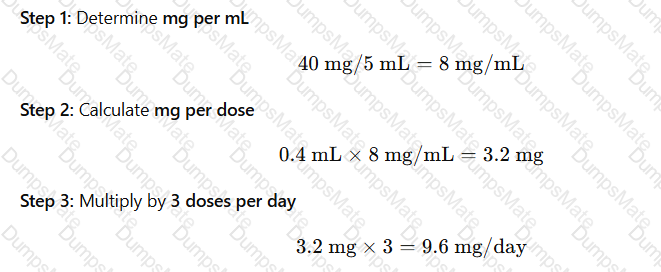Needlegauge (G)refers to thediameter of the needle’s lumen(opening).The higher the gauge number, the smaller the needle diameter.
Lower gauge (e.g., 13G, 18G)→Larger needle(wider opening)
Higher gauge (e.g., 27G)→Smaller needle(narrower opening)
Common Needle Gauges and Their Uses:Gauge (G)
Needle Diameter (mm)
Common Use
13G
2.4 mm
IV drug administration (large-bore)
18G
1.2 mm
Drawing thick medications (e.g., oil-based injections)
20G
0.9 mm
General intramuscular (IM) injections
27G
0.4 mm
Subcutaneous (SC) or intradermal (ID) injections (e.g., insulin, vaccines)
Since27Gis the highest gauge listed, it corresponds to thesmallestneedle diameter, making it the correct answer.
A. 13G❌→ One of the largest gauges, used for IV fluids or blood transfusions.
B. 18G❌→ Large needle used for thick medications likedepot injections or contrast agents.
C. 20G❌→ Common forintramuscular injectionsbut larger than 27G.
PTCB PTCE Exam Content Outline– Covers needle gauges, injection routes, and proper medication administration.
USP <797> & USP <800>– Provide sterile compounding guidelines, including appropriate needle gauge selection.
CDC Vaccine Administration Guidelines– Recommend25-30Gfor subcutaneous and intradermal injections.
Why Not the Other Options?Key References:



 A table with text and numbers
Description automatically generated with medium confidence
A table with text and numbers
Description automatically generated with medium confidence
